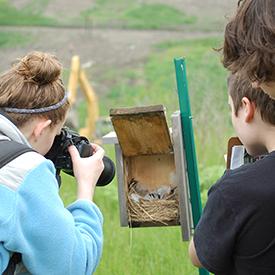
Over the years we have documented a wide variety of wildlife and wild plants we see on our property through various data collection efforts, land surveys by USDA wildlife biologists, and employee observations. You can see some pictures of Resource Recovery's fauna and flora below, and view a larger album here on our Facebook page. You can also download the complete list of species we've observed on our property, and some of the identification guides we’ve made, below.

Invertebrates
Some invertebrates that we've identified include Red Admiral, Pearl Crescent, Orange Sulphur, Black Swallow Tail and we even caught a glimpse of this Luna Moth in 2012!
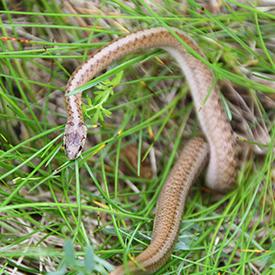
Amphibians and Reptiles
We’ve documented Green Frog, Bull Frog, Alligator Snapping Turtle, Eastern Painted Turtle, and Dekay’s Brown Snake. We especially like seeing and hearing frogs in our detention ponds, as they serve as biological indicators for water quality, in addition to the water quality tests we conduct regularly. Note that detention ponds hold rain water and snow melt that run off of the capped areas of the Central Landfill—not the rain water and snow melt that come into contact with the trash in the active areas.
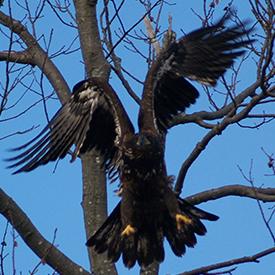
Birds
We’ve documented so many! The list includes: Bald Eagle, Short-eared Owl, Red-tailed Hawk, Red-shouldered Hawk, Cooper’s Hawk, American Kestrel, Great Blue Heron, Night Heron, Great Egret, Glossy Ibis, Double-crested Cormorant, Mallard, Mute Swan, Wild Turkey, Turkey Vulture, Black Vulture, Downy Woodpecker, Northern Flicker, American Robin, Northern Cardinal, Blue Jay, American Goldfinch, House Finch, House Sparrow, Eastern Bluebird, Tree Swallow, Barn Swallow, Horned Lark, Meadow Lark, Mocking Bird, Black-capped Chickadee, Tufted Titmouse, Brown-headed Cow Bird, Red-winged Black Bird, Snow Bunting, Indigo Bunting, Yellow Warblers, Dark-eyed Junco… and the list goes on!
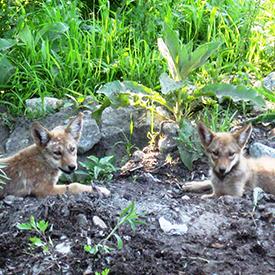
Mammals
We’ve documented American Coyote, White-tailed Deer, River Otter, Groundhog, Beaver, Fox, Eastern Cottontail, Little Brown Bat, Grey Squirrel, and Eastern Chipmunk. Sometimes we see the animals themselves—like these baby coyotes that were born on our property in 2010—or animal tracks and other signs (e.g. trees cut by a beaver’s teeth) to identify mammals on our property.
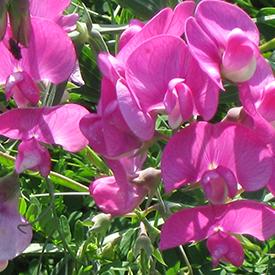
Plants
We’ve planted or documented many species of native plants on our property, and have identified and removed exotic-invasive plants, such as multiflora rose, purple loosestrife, and autumn olive. Some trees we’ve identified include Red Maple, River Birch, Gray Birch, Eastern Red Cedar, White Pine and White Oak. The Audubon Society of RI and the RI Wild Plant Society have been especially helpful with these efforts.



